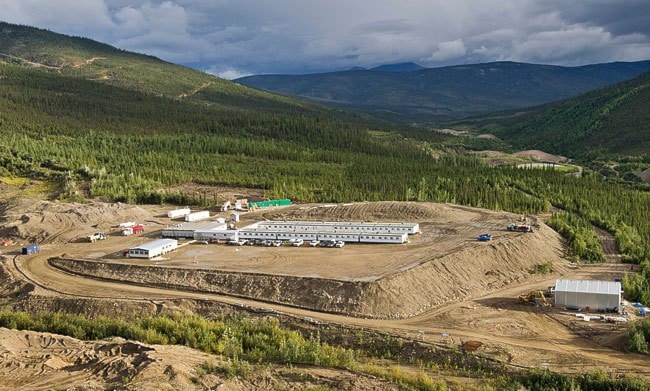The economic forecast for the territories this year is “bleak,” according to the latest territorial outlook from the Conference Board of Canada.
The forecast for Yukon is especially gloomy, with gross domestic product expected to decline by 3.4 per cent in 2015. That would make Yukon the only province or territory in Canada whose economy has shrunk for each of the last three years.
This forecast marks quite a change from the board’s December outlook, when it predicted that Yukon’s economy would grow by 6.6 per cent in 2015.
At that time, the board expected Yukon Zinc’s Wolverine mine to increase production and construction to begin on Victoria Gold Corp.’s Eagle Gold mine this year.
Instead, Wolverine shut down in January, citing low metal prices, and Victoria Gold is still waiting for $430 million in financing. The board now expects construction of the Eagle Gold mine to begin in 2017.
“Conditions for the mining sector haven’t improved at all,” said Marie-Christine Bernard, a forecaster with the conference board. “So that is affecting economic growth.”
Capstone’s Minto mine is currently the only operational hardrock mine in the Yukon. It produced 4,100 tonnes of copper in the first quarter of 2015, significantly more than expected, according to the new report.
The conference board estimates that mining production will drop by 23.7 per cent in the Yukon this year, but should start to recover in 2016 as production from Minto increases.
That recovery should continue with construction of the Eagle mine, Selwyn Chihong’s lead-zinc mine on the border of the Northwest Territories, and Kaminak’s Coffee gold mine south of Dawson City.
The board predicts that those three projects will be in operation in the next 15 years, and that GDP from mining should grow by more than 16 per cent each year between 2018 and 2020.
“There are a lot of projects that have a good chance of going ahead if we get the right conditions,” said Bernard. “It is a cyclical market, the mining industry, and we’ll have to see how conditions evolve.”
Western Copper and Gold’s proposed $2.5-billion Casino mine was not included in the forecast.
“We wanted to have a little bit more certainty before including it in our forecast,” said Bernard.
The construction sector will be fairly stagnant until work begins on the Eagle Gold project. However, the report pointed out that there are several large publicly funded construction projects, including the F. H. Collins school and the 150-bed Whistle Bend care facility in Whitehorse, as well as roadwork on several territorial highways.
The conference board also predicts that tourism will be a boon for the Yukon this year, largely due to low oil prices and a weak Canadian dollar that may attract international visitors.
Overall, employment will likely drop by 1.2 per cent this year – roughly 240 jobs. Last year, despite the economic downturn, the Yukon gained 500 positions. The report predicts that job creation will pick up again in 2016.
In the Northwest Territories, GDP is expected to decline by two per cent this year, also because of low mineral prices. In Nunavut, GDP is expected to grow by 3.8 per cent, in part due to development of the Mary River iron ore mine.
Overall, GDP will shrink by 0.9 per cent in the territories this year.
Contact Maura Forrest at maura.forrest@yukon-news.com
